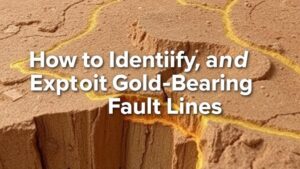How to Legally Stake a Claim on Public Land for Prospecting
How to Legally Stake a Claim on Public Land for Prospecting
Staking a claim on public land for prospecting is a time-honored practice that allows individuals to explore and potentially extract valuable minerals. But, the process is governed by a complex array of laws and regulations, which can vary by state and type of mineral. This article aims to provide a comprehensive yet accessible overview of the legal procedures involved in staking a claim on public lands.
Understanding Public Land and Mining Rights
Before diving into the mechanics of staking a claim, its essential to understand the types of public lands in the United States and the associated mining rights. Public lands, primarily managed by the Bureau of Land Management (BLM) and the U.S. Forest Service, are open to various uses, including mining, provided that proper legal guidelines are followed.
Mining rights enable individuals or companies to extract minerals from designated lands, often referred to as mining claims. Under the General Mining Law of 1872, citizens can stake claims on certain types of minerals found on federal public lands.
Steps for Staking a Claim
Staking a claim involves several critical steps that require careful adherence to legal procedures. Below are the key steps to legally stake a mining claim:
- Research the Land: Begin by conducting thorough research to identify potential claim areas. Use resources such as the BLMs Land Status Records and mining claim databases.
- Determine Claim Type: Identify whether your claim will be for lode minerals (hard rock mining) or placer minerals (alluvial deposits). Each type requires different forms and procedures.
- Mark Your Claim: Physically mark your claim by placing boundary markers. This process typically includes posting a notice on the claims location and recording specific coordinates.
- File Necessary Documents: Submit the required paperwork to the local BLM office. This typically includes a mining claim location notice and a map of your claim.
- Pay Fees: Pay the annual maintenance fees for the claim. In 2023, this fee is $155 per claim, plus location fees for new claims.
- Maintain the Claim: Regularly perform assessment work as required by state law, which generally mandates a minimum level of mining activities.
Legal Considerations and Compliance
Compliance with legal regulations is paramount when staking a claim. Failure to adhere to these laws can result in the loss of the claim. Important legal considerations include:
- Environmental Regulations: Prospective miners must comply with environmental laws, including the National Environmental Policy Act (NEPA), which mandates environmental assessments.
- State Specific Laws: Each state may have additional regulations governing mining claims. Its crucial to familiarize yourself with state laws, which may include specific filing requirements and tax obligations.
- Local Ordinances: Check for local zoning laws that pertain to mining activities, as some areas may restrict or prohibit mining altogether.
Real-World Applications and Case Studies
Various individuals and companies have successfully staked claims on public lands, leading to significant mineral discoveries. For example, the discovery of gold at Elda Mines in Nevada in the 1990s illustrates the lucrative potential of legally staked claims. This site, initially staked by amateur prospectors, later became a prominent mining operation that generated millions in revenue.
Another example includes the numerous small-scale miners in Alaska who stake claims for placer gold. These individuals often utilize portable mining equipment to extract gold from riverbeds, showcasing the opportunities available through proper legal channels.
Actionable Takeaways
Prospective prospectors looking to stake a claim should keep the following actionable takeaways in mind:
- Thoroughly research public land availability and existing claims using BLM resources.
- Clearly understand the differences between lode and placer claims and their specific requirements.
- Adhere strictly to both federal and state regulations to maintain legality and avoid losing your claim.
- Consider forming or joining prospecting clubs for support, education, and information about local best practices.
By following these guidelines and maintaining compliance with legal requirements, individuals can not only stake a claim but also harness the potential of public lands for prospecting endeavors.



